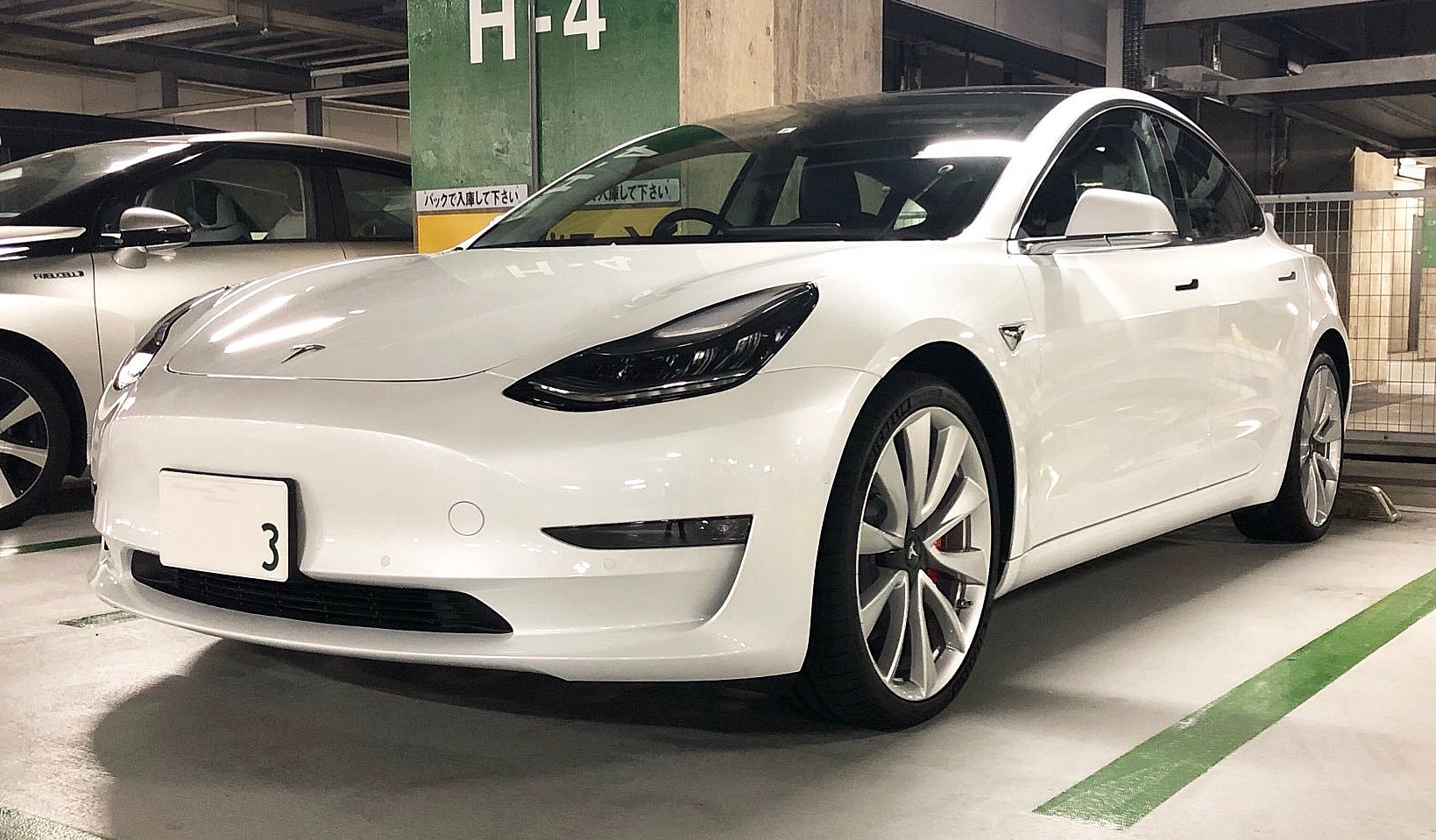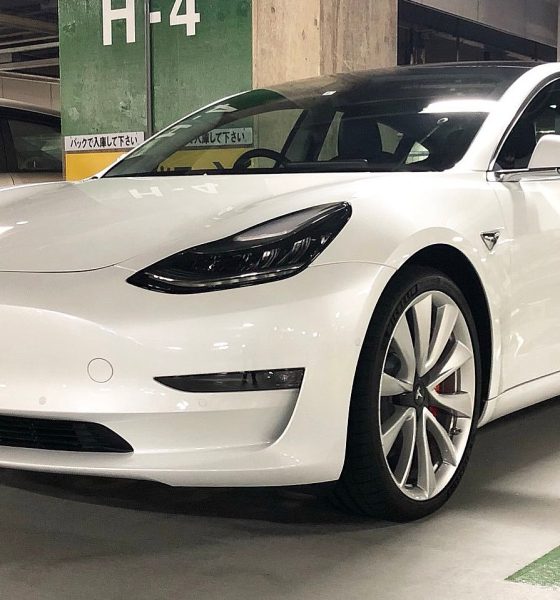

News
Tesla’s rise is unmasking Japan’s risk of being left behind
Tesla has been one of the automakers that have actually managed to thrive this year despite the pandemic. And as the electric car maker continues its rise, it is becoming pretty clear that legacy automakers who refuse to ride the transition to renewable transport risk getting left behind. This is the case even if the automaker in question is Toyota, the previous Number 1 carmaker by market cap.
Tesla only sells a fraction of the vehicles sold by Toyota every year, but the electric car maker has a market cap that is around $370 billion now. That’s roughly equivalent to the annual gross domestic product of Hong Kong, and it’s nowhere near reaching its full potential yet. TSLA bulls like Cathie Wood of ARK Invest note that Tesla’s Autopilot tech and data are pretty much ignored for now, and billionaire investor Ron Baron argues that Tesla Energy has as much potential as the company’s EV business.
Tesla is showing rapid growth across the globe, and this is no more evident than in China, a country that is currently home to the company’s first offshore Gigafactory in Shanghai. Thanks to this, as well as grassroots efforts that make Teslas widely supported by the Chinese government, the company is poised to reap benefits in the country. In Japan, however, things could not be more different. Tesla may have close ties with Japan thanks to its longtime battery partnership with Panasonic and its previous deal with Toyota, but today, the far east country’s mainstream vehicle market remains out of reach for the Silicon Valley-based maker.

Despite this, William Pesek, an award-winning Tokyo-based journalist and author of “Japanization: What the World Can Learn from Japan’s Lost Decades,” argues that Tesla’s rise across the globe further highlights how Japan’s auto market is still stuck in first gear. In an article on the Nikkei Asian Review, Pesek noted that what Japan is so far missing in the Tesla picture is the fact that Elon Musk does not sell cars. While Japan is still busy focusing on hardware, Tesla is already exploring software, allowing Elon Musk to pretty much sell than iPhone on wheels. This ensures that Tesla is capable of embracing the next generation of motoring.
“What Toyota long missed about Musk is that he is not selling cars. He is selling an iPhone with wheels. The vehicle itself is merely a medium to market the software undergirding the iTunes-like community that he is building. The data Tesla collects from users, their environs, interests, tendencies, travel habits and the range of behaviors will arguably be more valuable than the engines and high-performance batteries powering them. This enables Tesla to hone the customer experience, while discerning where the market will veer next,” Pesek wrote.

Perhaps what Japan really needs right now is to embrace the fact that sometimes, disruption is a necessary evil during times of transition. Strictly speaking, legacy automakers like Toyota should have no problem catching up to Tesla by, say 2025, due to their massive talent pool and resources. This does not seem to be case, however, as carmakers like Toyota have a tendency to focus more on legacy than innovation. Toyota has refined its car making processes through decades of refinements, and its global supply chain helps create millions of jobs. This, while noble in a way, is a weight that a company like Tesla simply does not have.
Tesla moves fast, fails fast, and innovates fast. The company’s vertical integration allows it to implement changes and improvements as soon as they are ready. Granted, automakers like Toyota could not adopt such changes overnight, but efforts must be done to increase innovation. This is something that Japanese companies are capable of doing, as seen in the continued efforts of Panasonic’s and its longtime battery partnership with Tesla in Gigafactory Nevada. Perhaps companies like Toyota, Nissan, Honda, and the other premier Japanese carmakers could do the same.
For now, it appears that Elon Musk has already won. So great is the gap in the electric vehicle market that newcomers like Lucid Motors and Rivian Automotive seem to have a better chance at catching Tesla than legacy carmakers. But amidst this threat of being permanently left behind, veterans in the auto market could also see this time as an opportunity to change and raise their electric vehicle game. If there’s anything that Tesla’s rise shows, after all, it is that renewable solutions are the new standard, and they are here to stay.

Elon Musk
Elon Musk’s X will start using a Tesla-like software update strategy
The initiative seems designed to accelerate updates to the social media platform, while maintaining maximum transparency.

Elon Musk’s social media platform X will adopt a Tesla-esque approach to software updates for its algorithm.
The initiative seems designed to accelerate updates to the social media platform, while maintaining maximum transparency.
X’s updates to its updates
As per Musk in a post on X, the social media company will be making a new algorithm to determine what organic and advertising posts are recommended to users. These updates would then be repeated every four weeks.
“We will make the new 𝕏 algorithm, including all code used to determine what organic and advertising posts are recommended to users, open source in 7 days. This will be repeated every 4 weeks, with comprehensive developer notes, to help you understand what changed,” Musk wrote in his post.
The initiative somewhat mirrors Tesla’s over-the-air update model, where vehicle software is regularly refined and pushed to users with detailed release notes. This should allow users to better understand the details of X’s every update and foster a healthy feedback loop for the social media platform.
xAI and X
X, formerly Twitter, has been acquired by Elon Musk’s artificial intelligence startup, xAI last year. Since then, xAI has seen a rapid rise in valuation. Following the company’s the company’s upsized $20 billion Series E funding round, estimates now suggest that xAI is worth tens about $230 to $235 billion. That’s several times larger than Tesla when Elon Musk received his controversial 2018 CEO Performance Award.
As per xAI, the Series E funding round attracted a diverse group of investors, including Valor Equity Partners, Stepstone Group, Fidelity Management & Research Company, Qatar Investment Authority, MGX, and Baron Capital Group, among others. Strategic partners NVIDIA and Cisco Investments also continued support for building the world’s largest GPU clusters.
News
Tesla FSD Supervised wins MotorTrend’s Best Driver Assistance Award
The decision marks a notable reversal for the publication from prior years, with judges citing major real-world improvements that pushed Tesla’s latest FSD software ahead of every competing ADAS system.

Tesla’s Full Self-Driving (Supervised) system has been named the best driver-assistance technology on the market, earning top honors at the 2026 MotorTrend Best Tech Awards.
The decision marks a notable reversal for the publication from prior years, with judges citing major real-world improvements that pushed Tesla’s latest FSD software ahead of every competing ADAS system. And it wasn’t even close.
MotorTrend reverses course
MotorTrend awarded Tesla FSD (Supervised) its 2026 Best Tech Driver Assistance title after extensive testing of the latest v14 software. The publication acknowledged that it had previously criticized earlier versions of FSD for erratic behavior and near-miss incidents, ultimately favoring rivals such as GM’s Super Cruise in earlier evaluations.
According to MotorTrend, the newest iteration of FSD resolved many of those shortcomings. Testers said v14 showed far smoother behavior in complex urban scenarios, including unprotected left turns, traffic circles, emergency vehicles, and dense city streets. While the system still requires constant driver supervision, judges concluded that no other advanced driver-assistance system currently matches its breadth of capability.
Unlike rival systems that rely on combinations of cameras, radar, lidar, and mapped highways, Tesla’s FSD operates using a camera-only approach and is capable of driving on city streets, rural roads, and freeways. MotorTrend stated that pure utility, the ability to handle nearly all road types, ultimately separated FSD from competitors like Ford BlueCruise, GM Super Cruise, and BMW’s Highway Assistant.
High cost and high capability
MotorTrend also addressed FSD’s pricing, which remains significantly higher than rival systems. Tesla currently charges $8,000 for a one-time purchase or $99 per month for a subscription, compared with far lower upfront and subscription costs from other automakers. The publication noted that the premium is justified given FSD’s unmatched scope and continuous software evolution.
Safety remained a central focus of the evaluation. While testers reported collision-free operation over thousands of miles, they noted ongoing concerns around FSD’s configurable driving modes, including options that allow aggressive driving and speeds beyond posted limits. MotorTrend emphasized that, like all Level 2 systems, FSD still depends on a fully attentive human driver at all times.
Despite those caveats, the publication concluded that Tesla’s rapid software progress fundamentally reshaped the competitive landscape. For drivers seeking the most capable hands-on driver-assistance system available today, MotorTrend concluded Tesla FSD (Supervised) now stands alone at the top.
News
Elon Musk’s Grokipedia surges to 5.6M articles, almost 79% of English Wikipedia
The explosive growth marks a major milestone for the AI-powered online encyclopedia, which was launched by Elon Musk’s xAI just months ago.

Elon Musk’s Grokipedia has grown to an impressive 5,615,201 articles as of today, closing in on 79% of the English Wikipedia’s current total of 7,119,376 articles.
The explosive growth marks a major milestone for the AI-powered online encyclopedia, which was launched by Elon Musk’s xAI just months ago. Needless to say, it would only be a matter of time before Grokipedia exceeds English Wikipedia in sheer volume.
Grokipedia’s rapid growth
xAI’s vision for Grokipedia emphasizes neutrality, while Grok’s reasoning capabilities allow for fast drafting and fact-checking. When Elon Musk announced the initiative in late September 2025, he noted that Grokipedia would be an improvement to Wikipedia because it would be designed to avoid bias.
At the time, Musk noted that Grokipedia “is a necessary step towards the xAI goal of understanding the Universe.”
Grokipedia was launched in late October, and while xAI was careful to list it only as Version 0.1 at the time, the online encyclopedia immediately earned praise. Wikipedia co-founder Larry Sanger highlighted the project’s innovative approach, noting how it leverages AI to fill knowledge gaps and enable rapid updates. Netizens also observed how Grokipedia tends to present articles in a more objective manner compared to Wikipedia, which is edited by humans.
Elon Musk’s ambitious plans
With 5,615,201 total articles, Grokipedia has now grown to almost 79% of English Wikipedia’s article base. This is incredibly quick, though Grokipedia remains text-only for now. xAI, for its part, has now updated the online encyclopedia’s iteration to v0.2.
Elon Musk has shared bold ideas for Grokipedia, including sending a record of the entire knowledge base to space as part of xAI’s mission to preserve and expand human understanding. At some point, Musk stated that Grokipedia will be renamed to Encyclopedia Galactica, and it will be sent to the cosmos.
“When Grokipedia is good enough (long way to go), we will change the name to Encyclopedia Galactica. It will be an open source distillation of all knowledge, including audio, images and video. Join xAI to help build the sci-fi version of the Library of Alexandria!” Musk wrote, adding in a later post that “Copies will be etched in stone and sent to the Moon, Mars and beyond. This time, it will not be lost.”








